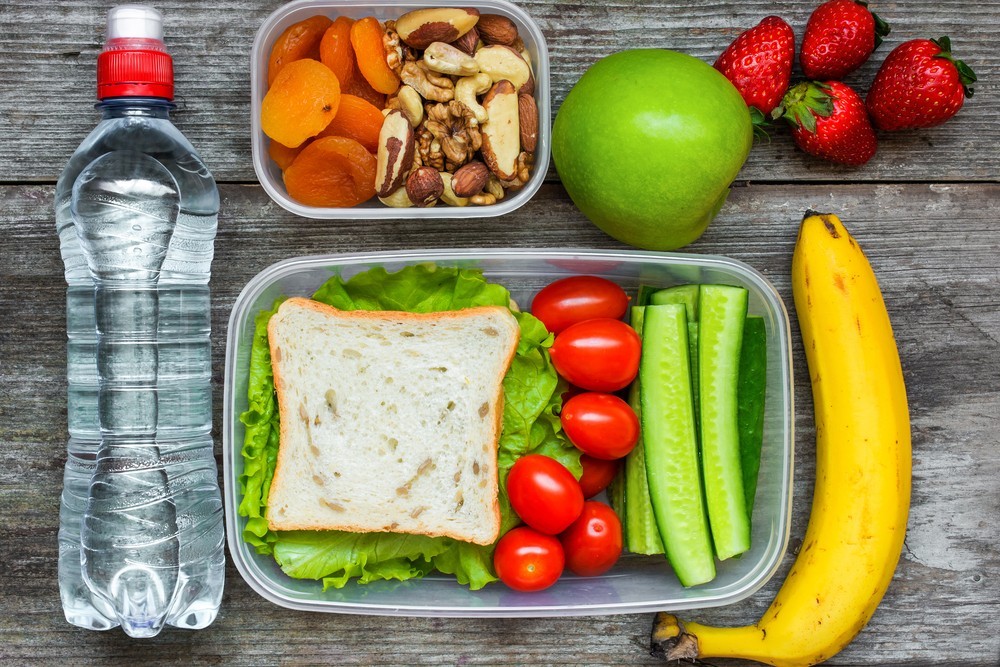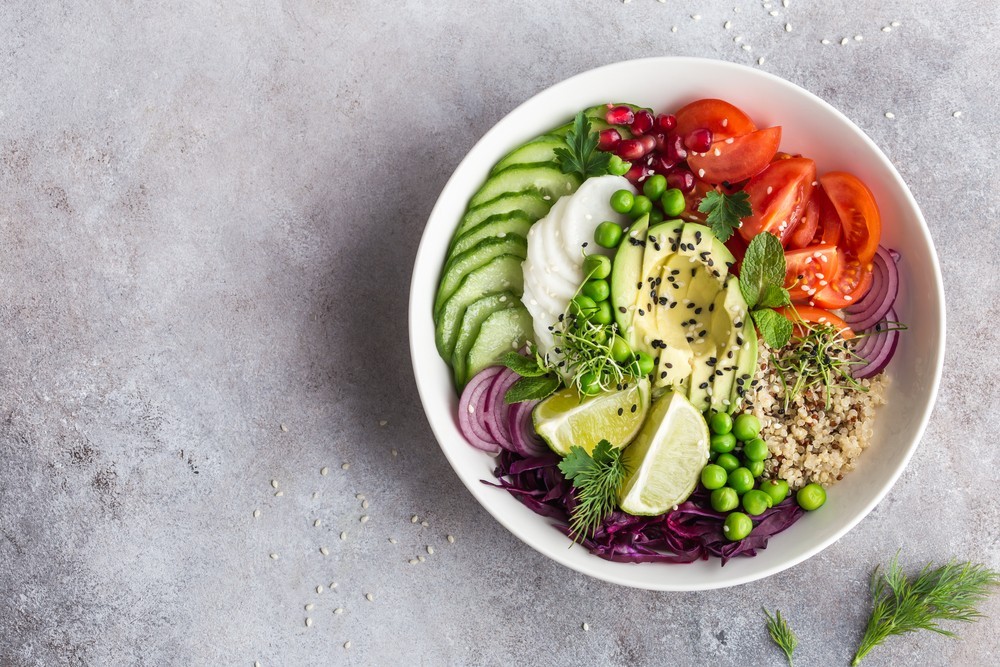19 best cheap healthy food hacks of all time
Want to save money AND stay healthy? Here’s how to manage both, without giving up on quality or quantity.
1. Eat seasonal
Seasonal fruit and vegetables are at their best nutritionally, and are often cheaper. Head for local markets or greengrocers and support local growers (they usually have the best quality for price as well).
2. Eat frozen
If there’s a fruit or vegetable you love that isn’t in season (ahem, berries), hopping over to the freezer section will yield a cheaper stash – it will have been snap frozen back when it was in season to lock in the nutritional value.
3. Eat canned
Likewise, canned foods are a great way to get a variety of healthy fruit and veggies into your diet without the out-of-season prices. Canned is also a great end of the week solution when all your fresh stocks are low – instead of adding alfalfa to your salad for extra nutrients, go for canned corn (or put them in a pikelet for a healthy and cheap brunch choice).
4. Snack wisely
Ditch the packet bikkies and two minute noodles and replace them with healthy, cheaper choices like bananas and boiled eggs – they cost less per serve, and are much better for you (the energy kick lasts longer too).

5. Be prepared
Keep at least two five-minute healthy meals prepped and ready to go for when the munchies kick-in, which will not only save you the cost of takeaway, but also a mid-week calorie blow out. Pre-cooked freezer meals can be packed with extra vegetables and trimmer cuts of meat to make an even healthier meal. You can also go outside the freezer – think canned baked beans on wholemeal toast, tinned tuna popped on top of a microwaved boiled potato with cheese and low fat yoghurt, or on top of a microwavable pack of wholemeal rice with diced tomato, herbs and canned corn.
6. Grow your own
Spinach, onions, lettuces and other leafy greens, chillies, capsicums and potatoes are all easy to grow and great for your health – and if you have little salad dodgers, you’ll find them far more interested in eating what they’ve helped grow and pick.

7. Shop online
If you’re prone to falling for pester-power or being dazzled by ‘bargains’, online shopping is your friend. You can search by “per unit cost” or “per kilo cost” to find the best deals, and come up with a menu based on online specials. Even better, you can ruthlessly cull your cart to hit a predetermined spend limit. You’ll also be able to more easily check whether you’re best to go with fresh, frozen or canned on fruit and vegetables.
8. Shop specialty stores
Getting to know your local grocer and butcher can save you money – you won’t be looking through aisles of impulse purchases to get the food you need, and they stock less packaged goodies, so you’ll be more inclined to make meals packed with fresh whole foods.
9. Make your own snack packs
Ditch the chips and grab small plastic food storers, glass jars or ziplock bags to make your own snack packs. Instead of saturated fat filled chips, go for nuts, seeds, dried fruits and cereal pieces (think Nutragrain, Milo flakes or Weetbix bites). Mini food containers can also be used to make cheese and cracker or hummus and veggie stick snack packs.
10. Soups up!
Soups can be packed with healthy greatness (just avoid the creams and fatty meat cuts), and are a great way to use up any veg hovering over its use by date, or on special in the ‘seconds’ section at the shop. The best part is you can combine almost any veggies together with some Italian herbs, salt and pepper and stock and you’ll have a delicious and unique soup.
11. Make your own stock
Instead of throwing chicken bones in the bin, boil them up in enough water to cover them, and make your own chicken stock that can be frozen for later use. You can do the same with veggie off cuts. Bonus tip: don’t have enough to make a decent amount of stock? Keep your scraps in a dated zip lock bag in the freezer and add to it until you have enough.
12. Embrace your inner Julia Child
Got a sweet tooth? Instead of buying bikkies and cakes, you can make your own for a fraction of the cost, and healthy them up by adding nuts and seeds (flax and linseed are great choices). Cakes and muffins are easy to freeze and defrost for visitors – or make a batch with grated fruit or veggies in it for your lunch boxes.

13. Cut out the booze
The cost of alcohol can bump up the family budget, so sticking to a set budget is great for your wallet – and your health.
14. Bulk up meals with vegetables
Halve the amount of meat in your recipe and switch with seasonal vegetables. Bolognese can be made healthier (and cheaper) with grated carrots or zucchini, chopped spinach or celery, or go light on the meat and up the potatoes and sweet potatoes in your next roast.

15. Or just remove the meat all together!
Meatless Mondays have become popular for health, moral, and financial reasons. Need inspo? Curries and casseroles adapt well (just follow your recipe, substituting meats for potatoes, chickpeas, carrots or soy products), as do pasta sauces.
16. Ditch rigid meal planning
Instead of pre-selecting your meals and shopping for the ingredients, go shopping and select healthy meats and veggies based on what’s on special or reduced (you can compromise by checking out the catalogues before you go, but be flexible if you spot in store specials).
17. Use mark down foods for slow cookers and casseroles
While a crisp salad and steak is probably best served with the fresher ingredients, meals destined for the slow cooker, a stew or curry can come from marked down produced without any loss of flavour, nutrition or texture.
18. Beans are your buddy
Beans add protein and bulk like a boss – from butter beans in soups, baked on your breakfast toast, or upping the nutritional value of your taco filling with refrieds (you can also make these by mashing canned red kidney beans).
19. Ditch the weekly shop
One of the biggest price hikers on a healthy diet is food wastage. Shopping every few days is your best bet for fruit and veg – and before you head for your next shop, look at everything in the crisper and see what can be made into a meal (even if you need a couple of additions from the shop).
Source: http://www.homelife.com.au/recipes/cooking-tips/19-best-cheap-healthy-food-hacks-of-all-time?ad_ref=%2Flifestyle%2Fthingswelove%2Fwaystosavemoney%2Fwaystosavemoney
This article provides general information which is current as at the time of production. The information contained in this communication does not constitute advice and should not be relied upon as such as it does not take into account your personal circumstances or needs. Professional advice should be sought prior to any action being taken in reliance on any of the information.



